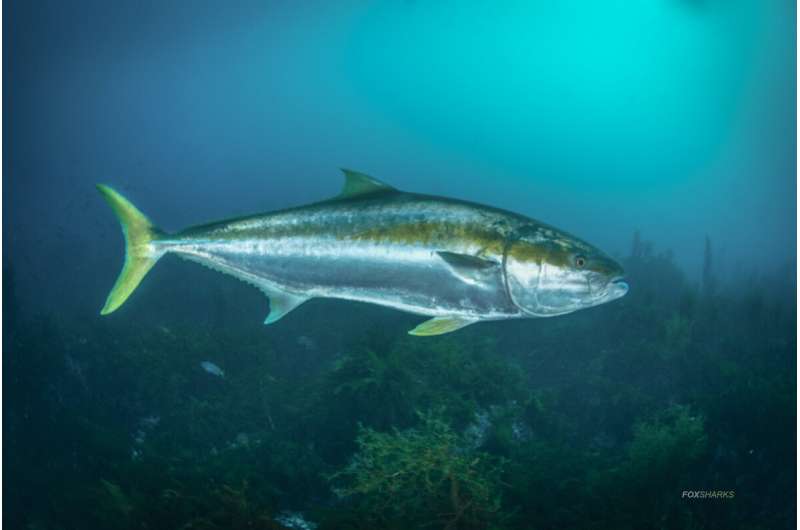Yellowtail Kingfish. Credit Andrew Fox- Rodney Fox Shark Expeditions.
Artificial intelligence has for the first time predicted the reproductive behavior of yellowtail kingfish by tracking their movements as part of new research revealed on #WorldOceanDay.
The new study, published in Movement Ecology, used machine learning algorithms to identify and distinguish between behaviors including courtship, feeding, escape, chafing, and swimming to showcase how technology can offer greater understanding of marine life.
The results revealed spawning behavior of yellowtail kingfish within the Neptune Islands Group Marine Park and Thorny Passage Marine Park in South Australia.
Researchers tagged captive kingfish and filmed their behavior in tanks to identify the acceleration signatures and applied artificial intelligence to identify behavior in free-ranging fish.
Flinders University Ph.D. student, Thomas Clarke, in the College of Science & Engineering, says it's the first study to use machine learning to identify spawning behaviors in wild kingfish and demonstrates how artificial intelligence can be used to better understand reproductive patterns.
"Through direct observations of courtship and spawning behaviors, our findings provide the first study to predict natural reproduction of yellowtail kingfish, via the use of accelerometers and machine learning. This study builds on past work, which has been limited to direct observations, by applying such models on free-ranging data in a natural environment."
Credit: Flinders University
"These findings offer the potential to identify naturally-occurring behaviors, which in the past have been only inferred through direct observations, or destructive approaches."
Associate Professor Charlie Huveneers, who leads the Southern Shark Ecology Group at Flinders University, says the results showcase how cameras, tagging sensors and machine learning offer an unprecedented opportunity for animal conservation.
"Understanding reproductive behaviors is essential to predict population responses to environmental and fishing pressures, and to develop suitable and adaptable management strategies, where required."
More information: Thomas M. Clarke et al, Using tri-axial accelerometer loggers to identify spawning behaviours of large pelagic fish, Movement Ecology (2021). DOI: 10.1186/s40462-021-00248-8
Provided by Flinders University
























